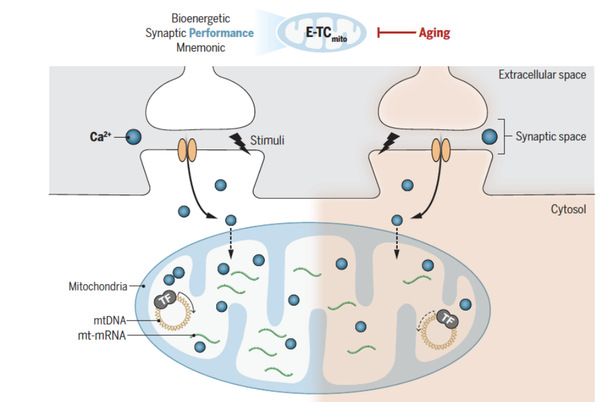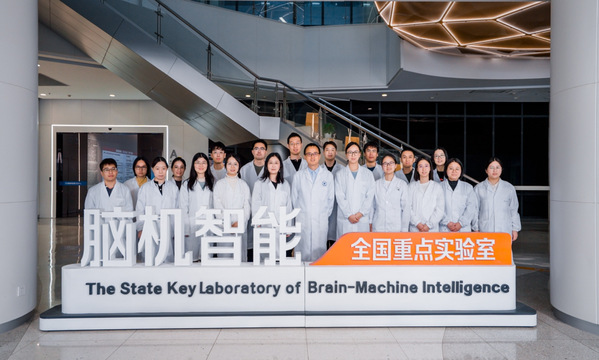As the core organ governing thought and consciousness, the brain consumes immense biological energy to maintain critical functions such as learning, memory, and emotions. To enable energy-efficient operation, the brain must finely regulate this process, achieving massive parallel information processing and storage at low energy costs. This high-efficiency, low-energy capability remains the ultimate goal of supercomputing and AI technologies, yet it is a peak still beyond human technological reach. Moreover, energy regulation in the brain is closely tied to human health, as its imbalance is considered a major risk factor for neurological disorders, particularly age-related neurodegenerative diseases.
Whether it is the energy crisis posed by AI's high energy consumption or the challenges of cognitive decline in aging populations, these are critical issues for humanity. From a scientific perspective, understanding how mammalian brains integrate energy, matter, and information—the fundamental elements of universe offers not only pathways to mimic and surpass the brain's evolved low-energy, high-efficiency mechanisms but also opportunities to address age-related challenges. Focusing on this cutting-edge neuroscience question, Prof. MA Huan's team at Zhejiang University investigated the relationship between neuroplastic regulation of bioenergetics and cognitive aging. Their findings, published in Science under the title Boosting neuronal activity-driven mitochondrial DNA transcription improves cognition in aged mice, provide a novel perspective and theoretical framework for understanding energy-efficient neural computation and combating cognitive aging.
Driving mitochondrial gene transcription with mental activity
The brain's hallmark is its ability to dynamically adjust the strength of neuronal connections based on activity and experience—termed synaptic plasticity. This plasticity relies on activity-driven transcription of nuclear genes, producing new proteins essential for learning and memory. Mitochondria, as the primary energy providers, are unique organelles with their own genome, and mitochondrial transcription is crucial for energy supply and biogenesis. The central question is: Can neuronal activity regulate mitochondrial gene transcription (E-TCmito), similar to its regulation of nuclear transcription? If so, this coupling would enable coordinated transformation of energy and matter to support information transmission and storage. Using mouse models, Prof. Ma's team discovered that enhanced neuronal activity—whether during learning or artificially induced—significantly increased mitochondrial gene transcription near synapses. Further investigation revealed that this activity-mitochondrial transcription coupling depends heavily on mitochondrial calcium influx induced by neuronal activity. This process is regulated by mitochondrial CaMKII (CaMKIImito). Once mitochondrial calcium levels rise, calcium-responsive transcription factor CREBmito binds to the D-loop region of the mitochondrial genome, driving gene transcription. Notably, both CaMKII and CREB are traditionally considered key regulators of nuclear gene transcription, and their newfound role in mitochondria challenges textbook definitions, showcasing their multifaceted functions in the nervous system. By dissecting these mechanisms, the team achieved precise molecular control over activity-driven mitochondrial transcription. They demonstrated that this process is essential for mitochondrial biogenesis, quality control, and the dynamic regulation of energy during neuronal activity—providing a foundation for maintaining synaptic function and cognitive processes such as learning and memory.

Can mental exercises rejuvenate the aging brain?
Research has shown that brain energy supply and cognitive ability decline with aging or neurodegeneration. The team observed that activity-driven mitochondrial transcription coupling weakens in aged brains. We speculated whether enhancing this coupling could improve brain function and counteract cognitive aging, said Dr. LI Wenwen. Using transgenic mouse models, they confirmed that suppression of this coupling led to energy deficits and cognitive impairments similar to aging-related neuropathology.

To address this, the team developed molecular tools to precisely enhance neuronal activity-mitochondrial transcription coupling. Experiments revealed that prolonged enhancement of this mechanism boosted mitochondrial gene expression during learning, increased energy supply, and significantly improved cognitive performance in aged mice. This provides theoretical evidence that mental exercises can counteract brain aging, Dr. Li added. Unraveling this fundamental signaling mechanism in neurons not only deepens understanding of brain function but also offers a new molecular framework for combating cognitive decline. Ongoing translational research and drug development have shown encouraging results.
| Implications for Energy-Efficient Artificial Intelligence |
Elon Musk has highlighted that, beyond chip shortages, energy will be the next bottleneck for AI computation. Could the brain's low-energy information processing inspire solutions to AI's energy demands? Prof. Ma's team recognized that the evolutionary mechanism of neuronal activity-mitochondrial transcription coupling might hold the key. Unlike traditional computers, which rely on uniform energy supply, the mammalian brain employs a unique on-demand energy strategy: mitochondria near synapses act as energy packets regulated by local neuronal activity. This discovery suggests that the brain achieves efficient, low-energy computation by dynamically regulating local energy production at each data node (synapse). “Revealing this fundamental coupling mechanism may help AI systems enhance computational efficiency while reducing energy consumption,” said Prof. Ma.
Related paper:
Li, W., Li, J., Li, J., Wei, C., Laviv, T., Dong, M., Lin, J., Calubag, M., Colgan, L., Jin, K., et al., (2024). Boosting neuronal activity-driven mitochondrial DNA transcription improves cognition in aged mice. Science 386, eadp6547.
Lab Introduction:
In Ma lab, we are passionate about studying the brain, embracing youth and dreams, and cherishing moments with friends to recall the past and imagine the future! Guided by clinical data and using transgenic mouse models, our lab employs electrophysiology, molecular biology, and behavioral analysis to conduct both fundamental and translational research. Our main research focuses include neuroplasticity, learning and memory, aging, and sex dimorphism. Our findings have been published in prestigious journals such as Science, Cell, and Neuron.
Contact of the lab: mah@zju.edu.cn

Source: The research team led by Prof. MA Huan